Are you planning a winter trip to Montana but aren’t sure which boots are best for keeping your feet warm in the coldest conditions? Prepare yourself because I’m about to walk you through a comprehensive Montana Winter Boots guide.
Cold feet can ruin an otherwise thrilling winter adventure, so getting your boots right is crucial. Winter in Montana demands more than just any run-of-the-mill fashion piece; your toes must be protected against the unforgiving cold and wet.
In this definitive guide, you’ll learn which winter boot types perfectly complement your plans – whether it’s hiking on packed snow, braving wet conditions, or just a simple downtown stroll. I’ll also share how to care for your chosen winter boots, and suggest some top brands and models that are truly Montana-tested and approved!
Each segment will provide you with detailed insights and useful tips that will make your boot-buying experience not just informative but enjoyable.
- Related article: Experience Winter in Montana
So are you ready to get on top of your Montana winter boot game? Intrigued to learn which boots promise the best performance, style, and comfort while you navigate the icy terrains? Let’s dive in, and prepare your feet for an unforgettably cozy Montana winter.
7 Key Takeaways on Montana Winter Boots Guide
- Determining your specific outdoor activities helps narrow the best boot options. Choices include casual boots, hiking boots, work boots, hunting boots, duck boots, and pac boots.
- Synthetic insulation is a reliable choice for heat retention in Montana’s harsh winters, whereas felt and sheepskin are cozier but may not perform as well when wet.
- The two-piece design offers double protection and insulation in heavy snow, while one-piece designs are more flexible and lightweight, suitable for less extreme conditions.
- Deep treads with high-quality rubber compounds provide the best traction for Montana’s snow and ice-covered terrain.
- The trade-off between heavy, well-insulated boots for sedentary activities and lighter, more agile boots for active sports or city commutes.
- The height of your boot is closely linked with functionality and protection, from ankle height for casual wear to taller boots for heavy snowfall and extreme conditions.
- Ensuring the right length and width for your boots with ample room for thicker winter socks is foundational in keeping your feet warm, comfortable, and blister-free.
How to Choose the Best Montana Winter Boots
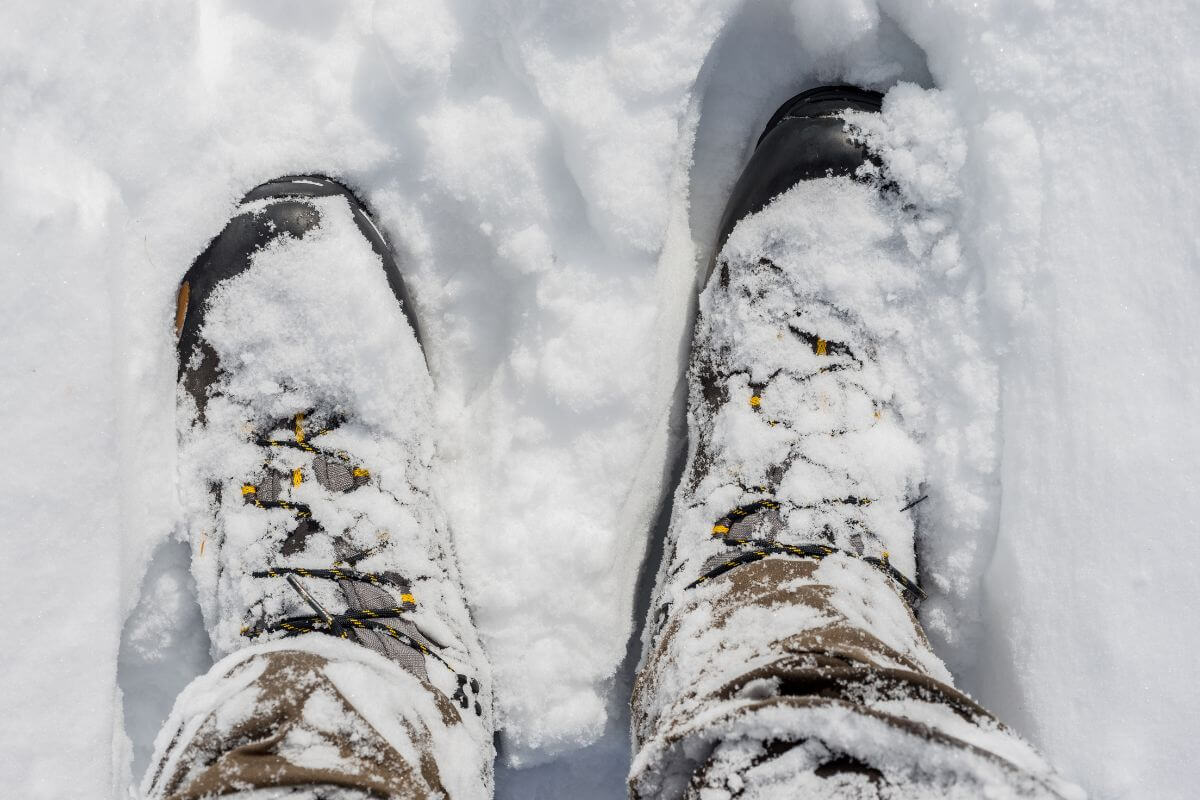
In Montana’s cold conditions, selecting the best boots for winter is more than just a fashion piece; it’s a matter of practicality and comfort. Slogging through snowdrifts and icy streets demands a specific kind of footwear to keep those cold feet warm.
So, let’s identify the key considerations to help you choose the perfect winter boots for the Treasure State’s unforgiving snow. Remember, your winter boots together with your outdoor gear are your steadfast allies against the chill, so choose wisely, and make sure they fit like a glove (or a boot, in this case).
1. Purpose
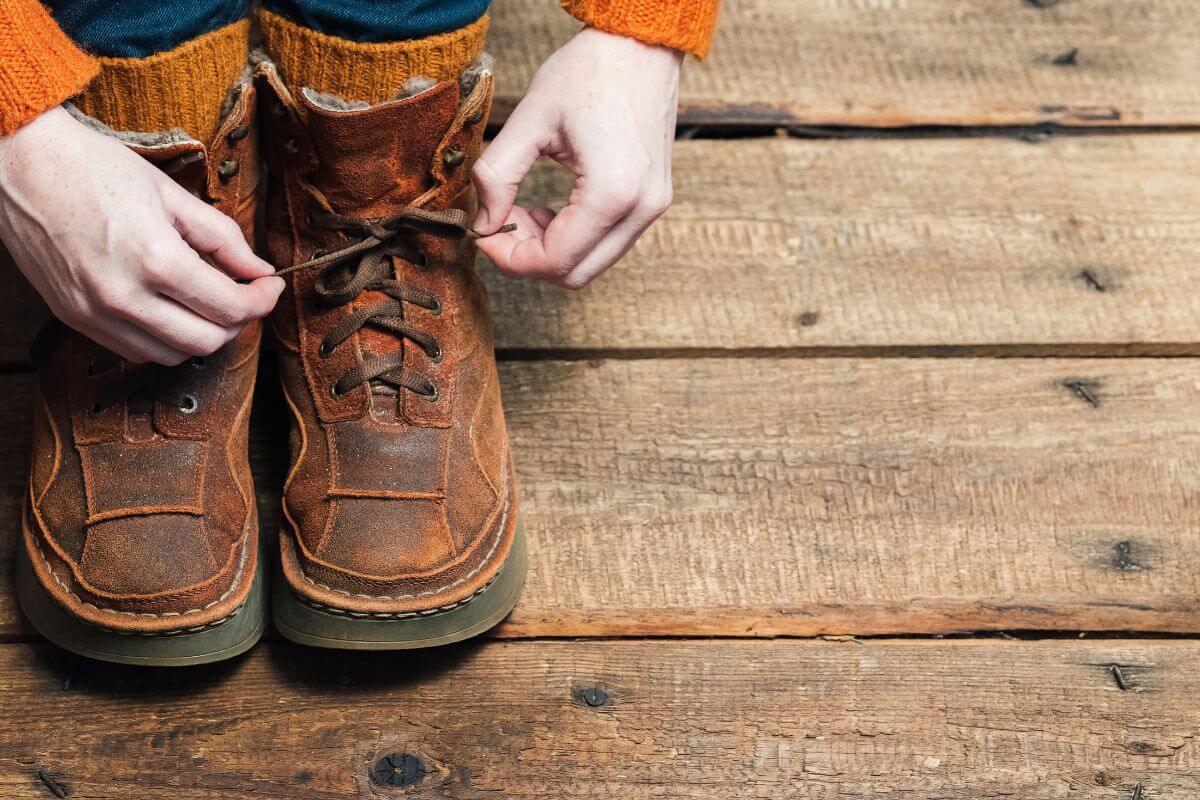
When it comes to navigating Montana’s winter wonderland, I can’t understate the significance of picking the right pair of boots. So before you find yourself knee-deep in packed snow, let’s think about what you plan on doing out there.
Factors such as durability, flexibility, and material are the key things in determining the quality and suitability of your winter boots. Here are the types of winter boots to guide you in choosing:
- Casual Winter Boots – For those trips around a snow-covered downtown or even for a quick coffee run, casual boots are the way to go. These typically offer a good mix of leather and synthetic materials for lightness, mid-range insulation for comfortable warmth, and solid support for city strolls.
- Snow Hiking Boots – If you’re more mountain-bound than town-bound, levels up in traction and insulation might be your preference. The snow hiking boots offers a balance between the bulk of a hiker and the added benefits of insulation and traction for snowy trails.
- Winter Work Boots – Winter work boots are usually made of durable, thick leather and packed with built-in insulation, sometimes even boasting a composite safety toe or steel toe.
- Winter Hunting Boots – If your idea of fun is tracking game through rocky, icy terrains, say hello to winter hunting boots. With exceptional traction and added insulation and waterproofing, these are designed for hunters who don’t settle for less than total foot comfort.
- Duck Boots – Duck boots might seem more of a fashion statement, but their sturdy rubber shells and waterproof leather uppers make them suitable for water, mud, and light to moderate snow conditions.
- Pac Boots – These boots, designed with a thick rubber lower shell and heavy-duty nylon or leather uppers, are ideal for extreme temperatures, perfect for long days of outdoor chores, or even for leisurely winter sports like ice fishing.
By taking these factors into account, you’re putting your best foot forward, quite literally, for a cozy and confident winter in Montana.
2. Insulation
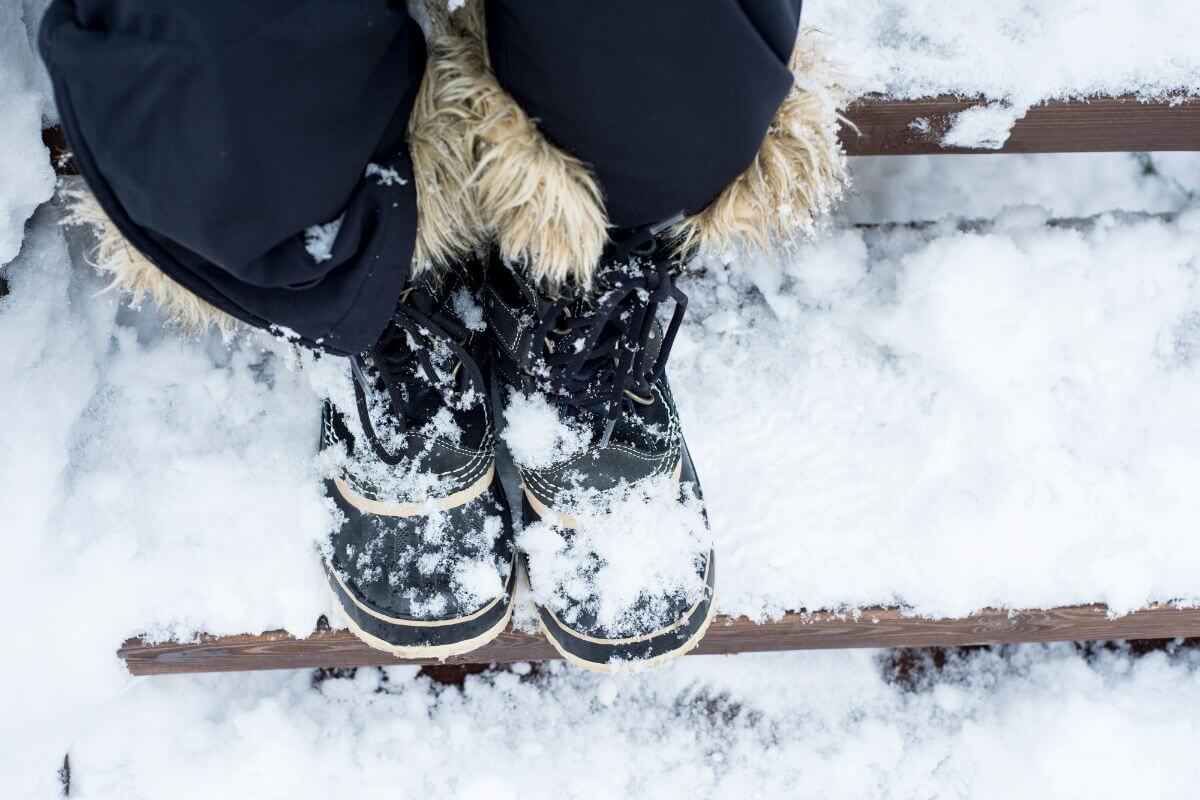
In Montana, where low temperatures are a part of life, it’s crucial to have a pair of boots that keeps the cold at bay. So what’s the key to staying toasty? Insulation.
Here are the most common types of insulation used in winter boots to attain the right balance of warmth and comfort:
- Synthetic Insulation – Contemporary winter boots feature synthetic insulation, providing lightweight warmth and durability, even retaining heat when wet — an ideal choice for Montana’s snowy conditions. Opt for a fill rating of 200-400g for everyday use and 300g or higher for harsh, icy conditions.
- Felt and Sheepskin – You’ll find these materials in the lining, directly in contact with your foot. Felt and sheepskin offer plenty of warmth, but a word of caution – in a Montana winter, if they get soaked, they can become weighty and take a while to dry.
If invaluable warmth is your goal, synthetic insulation is often the preferred choice. Felt and sheepskin offer great warmth too, but manage less well in wet or heavy snow conditions. If you’re aiming to venture into the freezing winters of Montana, heavy-duty boots with significant insulation are your best friends.
3. Waterproof
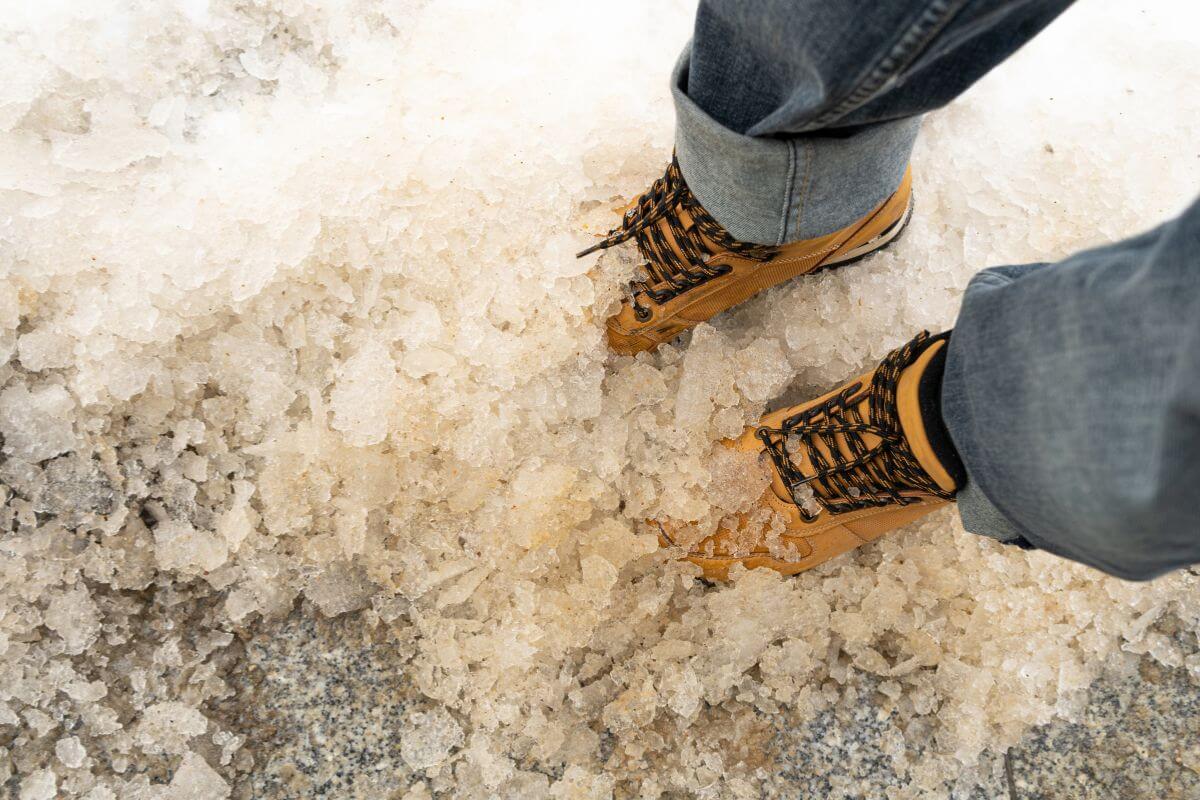
Why have winter boots if they’re not waterproof? This is what shields your precious toes from the wet conditions that Montana’s winter loves to throw. Boots made with rubber outer layers and treated for an exterior water-resistant finish are the top contenders here.
These two common designs play a significant role in determining a boot’s resilience against wet snow:
- One-Piece Design – Sleeker and more flexible, one-piece boots eliminate separate liners and feature a snug, hidden breathable membrane between the outer material and the lining. Ideal for slightly less demanding conditions or days when flexibility takes precedence over the heft of a two-piece structure.
- Two-Piece Design – A two-piece design comes packed with an outer waterproof barrier and an inner removable liner. Double the protection, double the warmth – perfect for heavy snow.
The extent of waterproofing you need depends on the type of expeditions you’re planning. A less harsh adventure might do just fine with a one-piece, while for the foot soldiers out there braving Montana’s coldest and wettest, the more fortified two-piece is a smart move.
Think of waterproofing not just as a feature but as your insurance policy against the elements. Whatever design you opt for, just ensure it incorporates smart materials and solid craftsmanship – because no one wants soggy socks on the mountain.
4. Traction
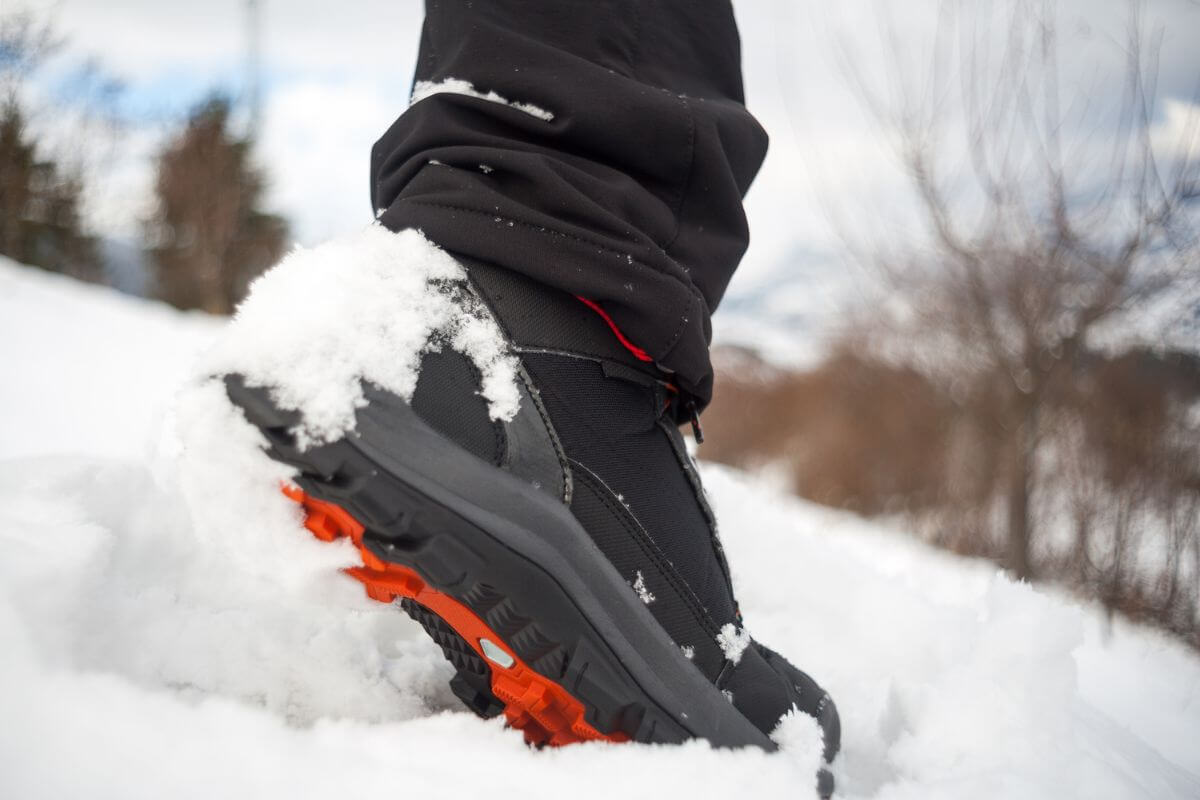
Winter boots are more than just fashion accessories; they’re thoughtfully designed to keep you firmly planted on Montana’s snow and ice-covered terrain, and excellent traction is the name of the game.
The outsole, that’s the base of the boot you put your weight on – it’s the key player here. You’ll find a variety of tread patterns and grippy outsoles designed with specific winter activities in mind.
Generally, hiking boots come with a deep tread and superior grip, built for excellent traction. They help you scale those picturesque snow-covered peaks without missing a step.
Work boots on the other hand are more on durability than grip. These boots have heavy, bulky outsoles usually made for demanding work conditions.
So, if your winter journey involves a lot of slippery ice, invest in winter boots with a good grip. Your boots aren’t just about keeping your feet warm; they’re your best bet at preventing an impromptu ice-skating performance in a grocery store parking lot.
Boots with excellent traction can make all the difference between a winter wonderland stroll and an accidental comedy routine.
5. Weight and Bulk
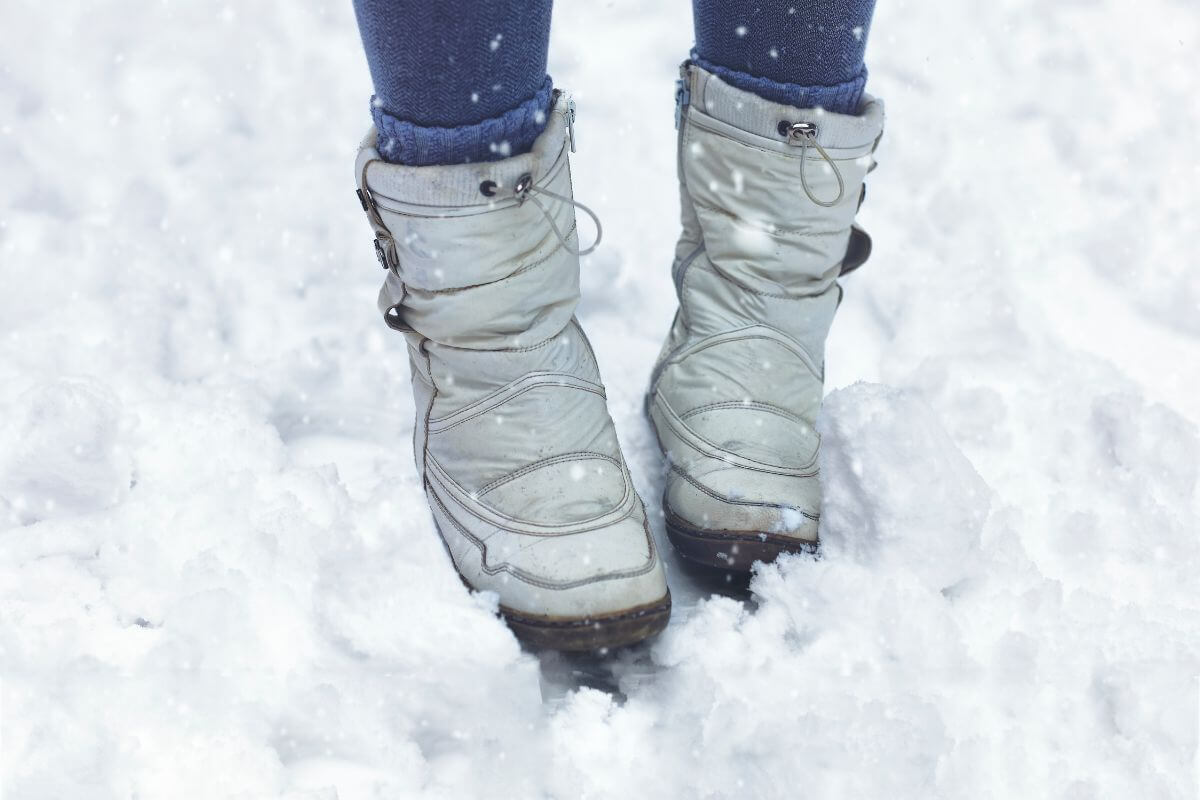
The weight and bulk of your winter boots can make or break your winter experience. When buying winter boots, consider how heavier boots generally provide better insulation and stability.
If you’re planning on braving the cold in an open field or traversing rocky, icy terrain, a heavy-duty weight class is your friend. However, there’s a trade-off; they might not be the best for active snow sports or when you’re expecting to roam large distances.
On the other end of the scale, lightweight boots are a charm for agility, but may not provide as much warmth and grip. In Montana’s less harsh conditions, a good pair of lightweight boots will provide all-day comfort.
Remember – especially for folks living in Montana’s rural areas where icy sidewalks are less treated and winters are harsh – a balance is often the best approach.
6. Boot Height
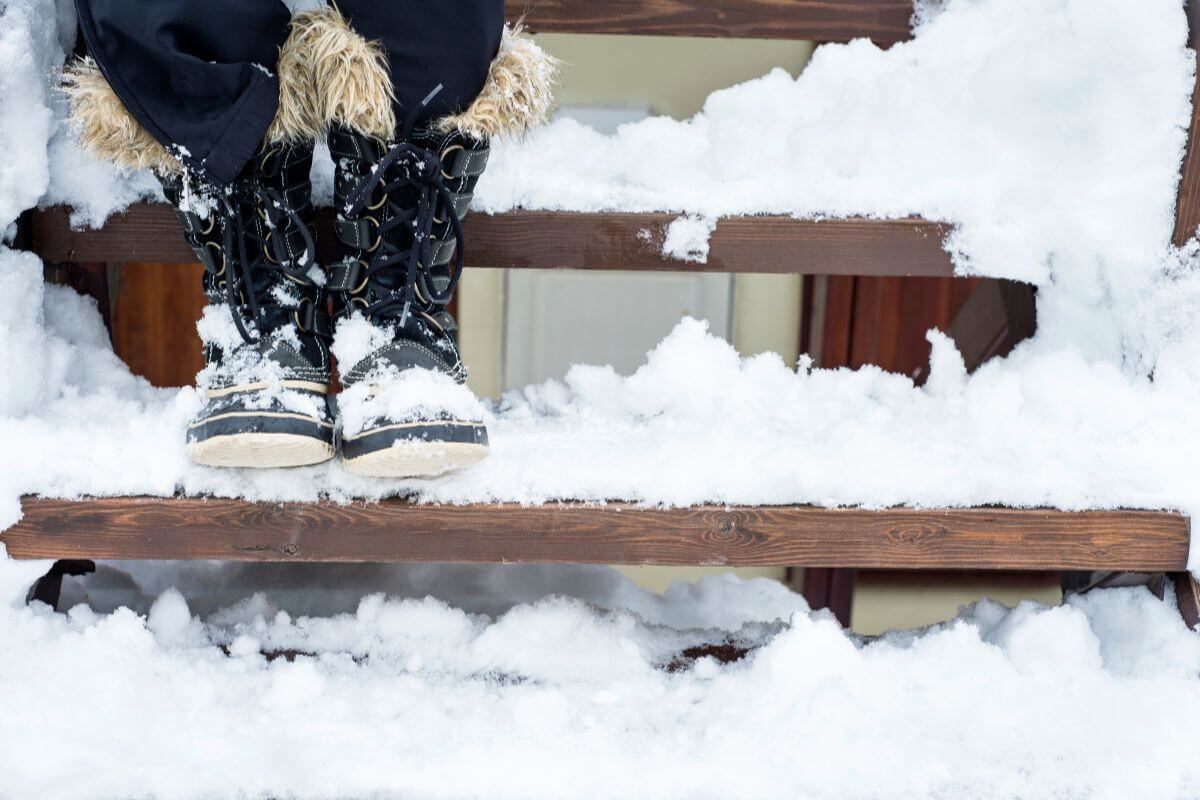
Boot height is no small consideration when you’re navigating Montana’s snow-draped landscapes. It isn’t just about style – it significantly determines a boot’s functionality.
The key to versatile winter footwear lies in understanding the boot heights and the activities they’re best suited for:
- Ankle height – Most winter boots are ankle-high or taller, offering a blend of practicality and comfort for everyday wear. These are perfect for lighter snowfall and casual strolls in town.
- Lower-cut boots – Typically around 7 inches from the footbed to the top, these are great for hiking and varied terrain. They’re lighter and offer more flexibility, making them perfect for the milder weather of early winter.
- Taller boots – For heavy snowfall and frigid conditions, choose boots at least 8 inches in height, offering more leg coverage and keeping the elements out for enhanced warmth and protection — ideal for extreme weather and outdoor work scenarios.
Just like how you’d pick the right tires for your car, choosing the right boot height determines how efficiently you’ll move in harsh winter conditions. Think of it as matching what’s on your feet to the terrain you’re about to tread.
7. Fit and Sizing
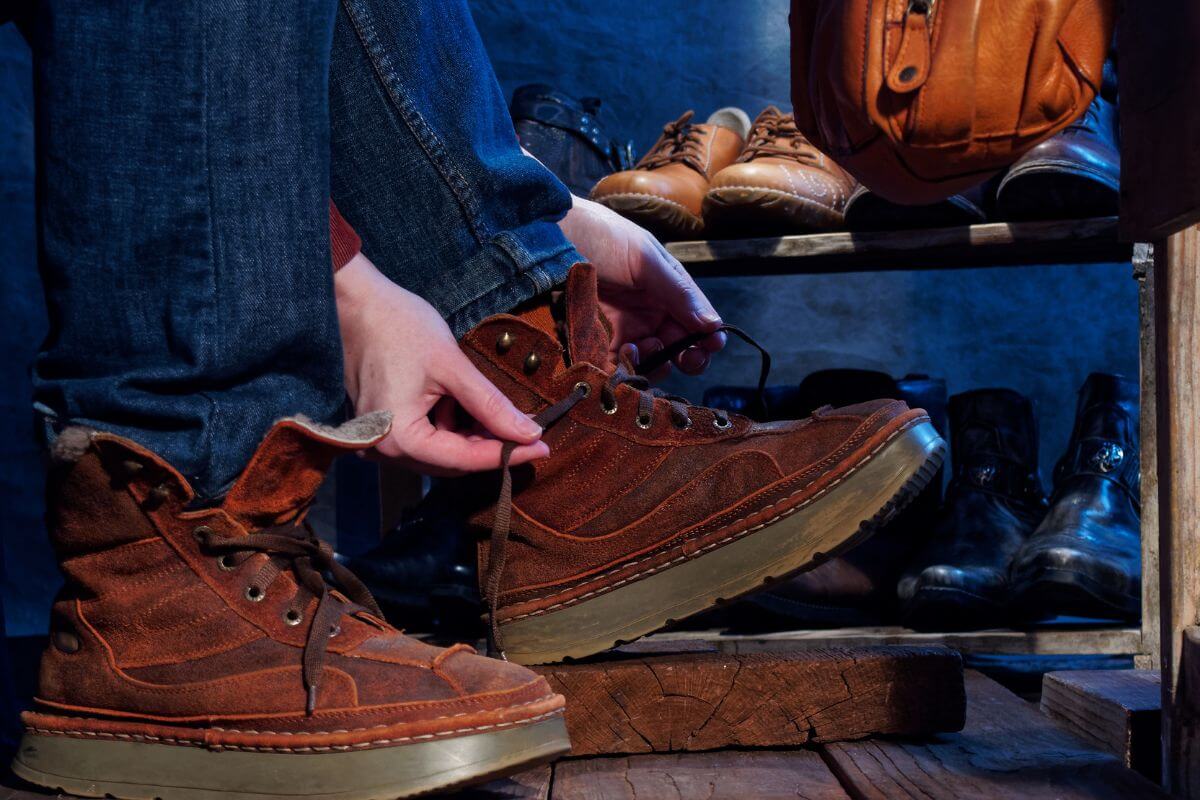
Your choice of footwear isn’t just about fashion – it’s a critical line of defense for your feet. Proper sizing and fit are the cornerstone of keeping your feet cozy, warm, and blister-free.
It sounds obvious, but ensuring that your boots or shoes have the correct length and width is non-negotiable. A well-fitted boot is one that’s snug but not suffocating, providing support without constriction.
Also, make room for winter socks. Remember, winter socks are thicker than regular ones. Your boots should have enough space to comfortably accommodate these or even thicker, serious wool socks.
If your boots are too tight, expect pain rather than pleasure. On the flip side, overly loose boots will invite unwanted friction, leading to blisters and discomfort.
If you’re planning to trek through the woods or work on your feet for long hours, opt for a snug fit to enhance performance and minimize fatigue. On the other hand, if your boots are going to spend more time chilling around town than scaling mountains, a looser, comfort-focused fit will serve you better.
8. Styling
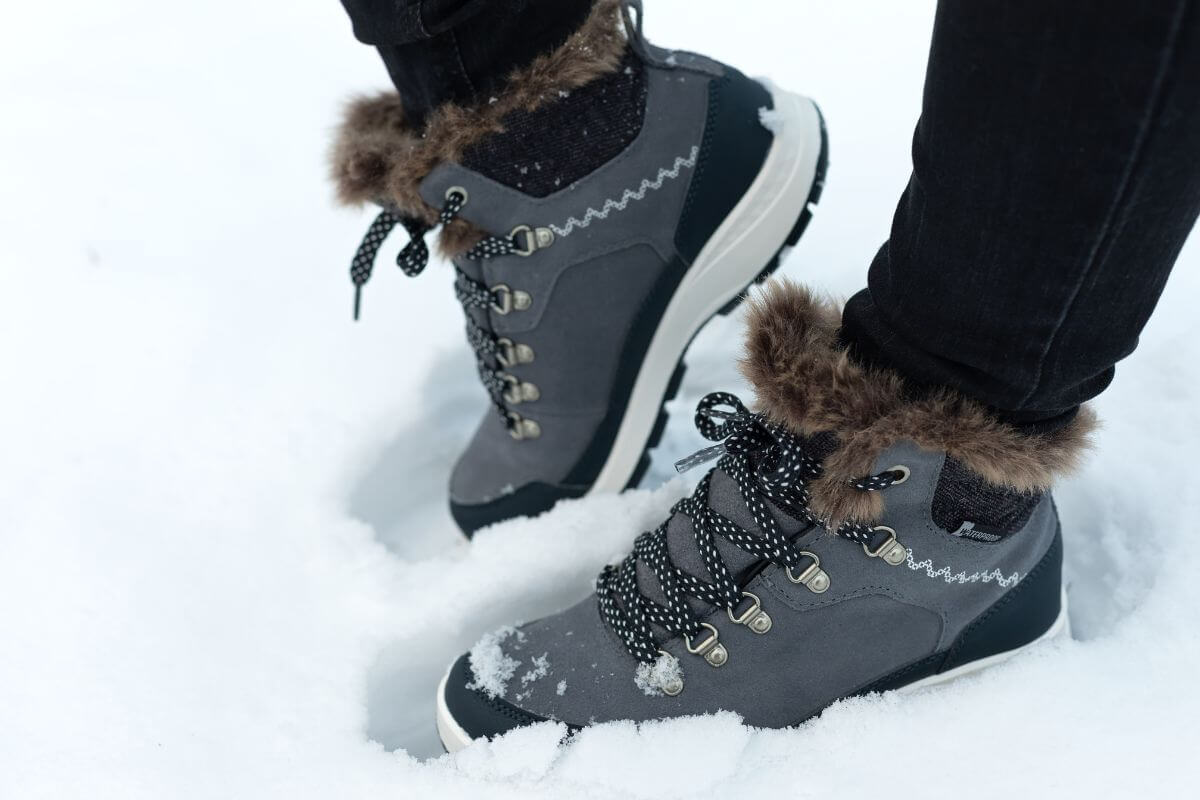
When it comes to traversing Montana’s winter wonderland, striking a balance between style and function is a real game-changer. Many of us are not just hiking and snowshoeing in our winter boots; we’re also wearing them to work, for casual strolls, and even out on the town.
Thankfully, gone are the days when winter footwear was purely functional, and we had to sacrifice style for warmth. Today, you can find snow boots with fashionable flair like chic faux fur cuffs, wool lining, cozy shearling linings, and various other stylish details.
Boots with a fur lining not only keep your toes toasty but also add a touch of luxury to even the most casual Montana winter outfits. When shopping for stylish winter boots, don’t be afraid to explore various exterior materials, classic styling, and finer details that match your taste.
How to Care For Your Montana Winter Boots
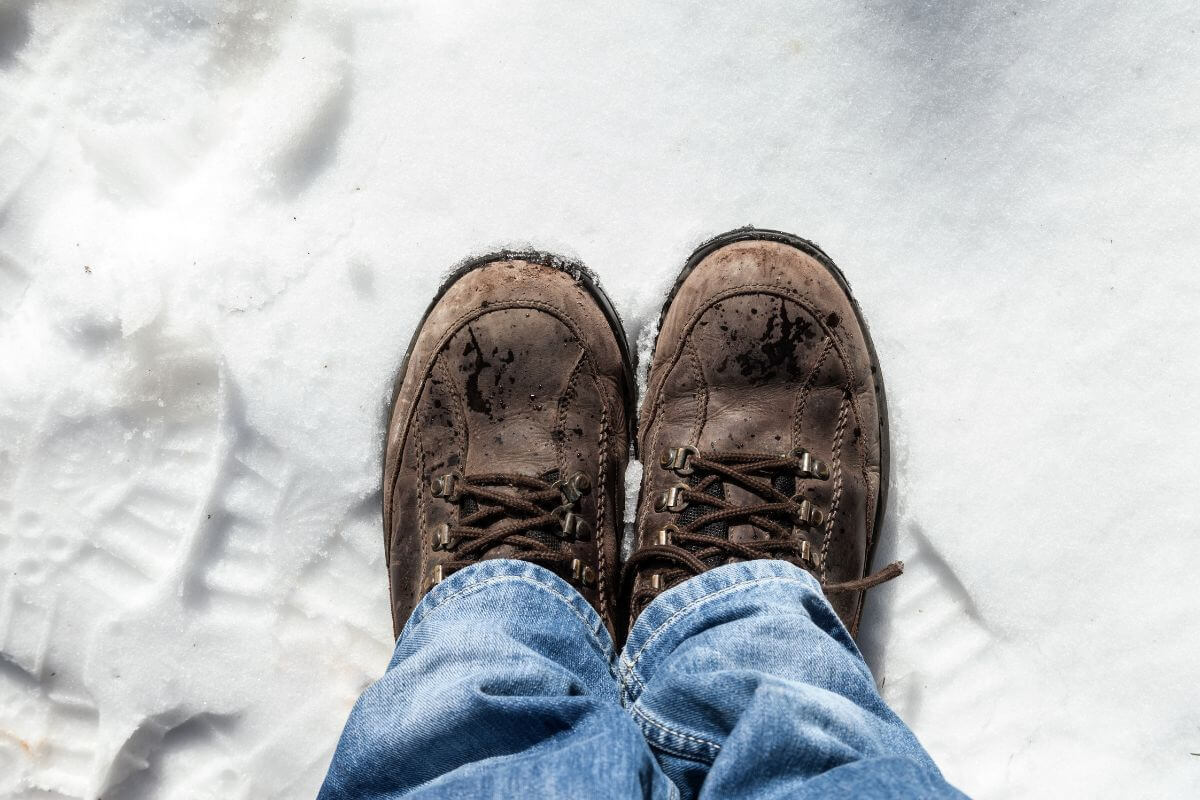
Montana winter boots are essential for keeping your feet dry, warm, and protected during the harsh winter months. To ensure that your boots continue to provide the best possible performance and keep their appearance looking great, it’s important to care for them properly.
Proper care can also extend the lifespan of your boots, saving you money in the long run. By following these tips, you can keep your boots in top condition and ready for whatever winter throws your way.
1. Cleaning
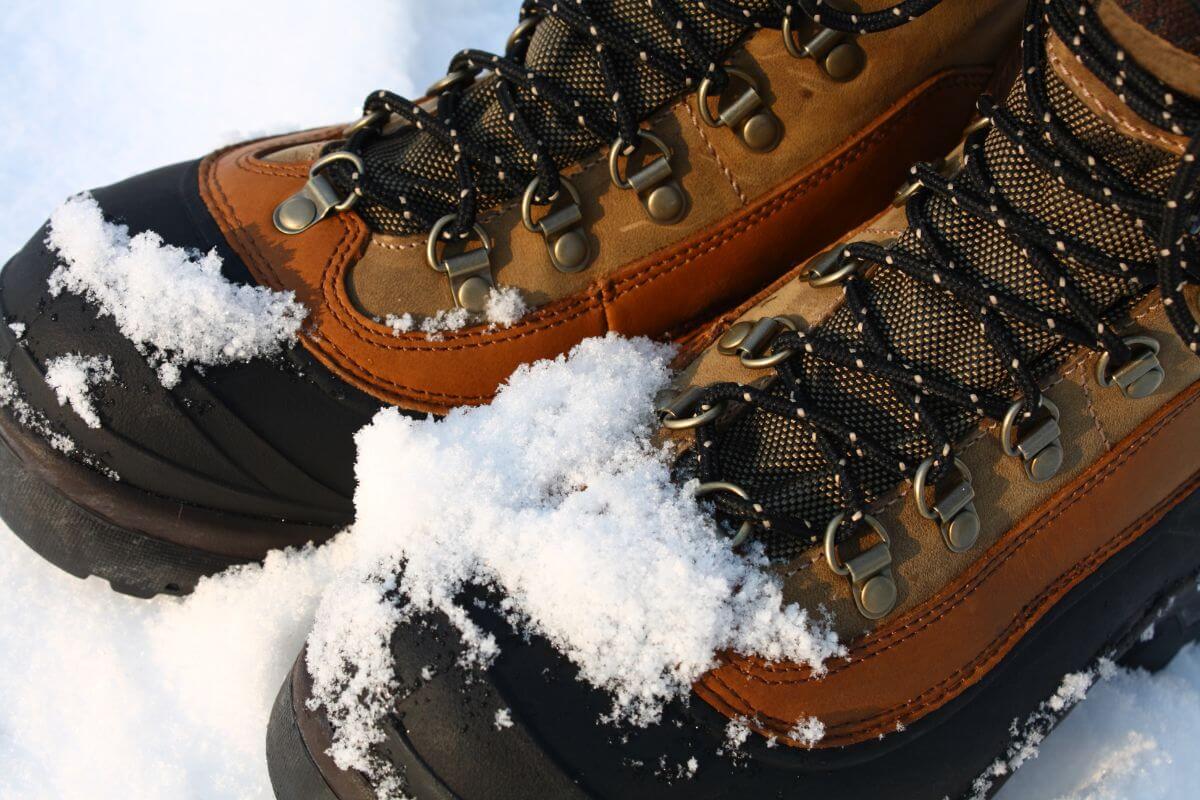
For all-weather boots, the classic solution of equal parts water and white vinegar is a failsafe option to lift dirt and grime. Dab the mixture on the affected areas and rinse off with a wet cloth. Don’t worry, the vinegar smell quickly dissipates, leaving your boots pristine and odor-free.
For most snow boots and winter shoes, a gentle wipe with a shoe cleaner or damp cloth is sufficient to banish the bothersome snow slush. If you’re treading in the more stylish realm of leather, opt for a quality cleaner and conditioner to keep them in top form.
For suede boots, avoid wet cleaning methods. Instead, try reworking the nap with a soft towel or lightly brushing stained areas. Then, seal the deal with a water-repellant solution to keep them looking fresh.
Before you venture into the winter wonderland, it’s imperative to coat your boots with a spray that’s not just water-resistant but also guards against stubborn stains and corrosive salt. Look for formulas that are kind to leather and suede. And remember, a pre-season spritz is just the beginning – reapply at least once later in the winter to maintain effectiveness.
Your winter boots are your trusty companions through Montana’s icy territories – they deserve a little TLC. By incorporating these cleaning practices into your winter boot care routine, you can ensure they’re ready to tackle the chill and look great while doing so.
2. Drying
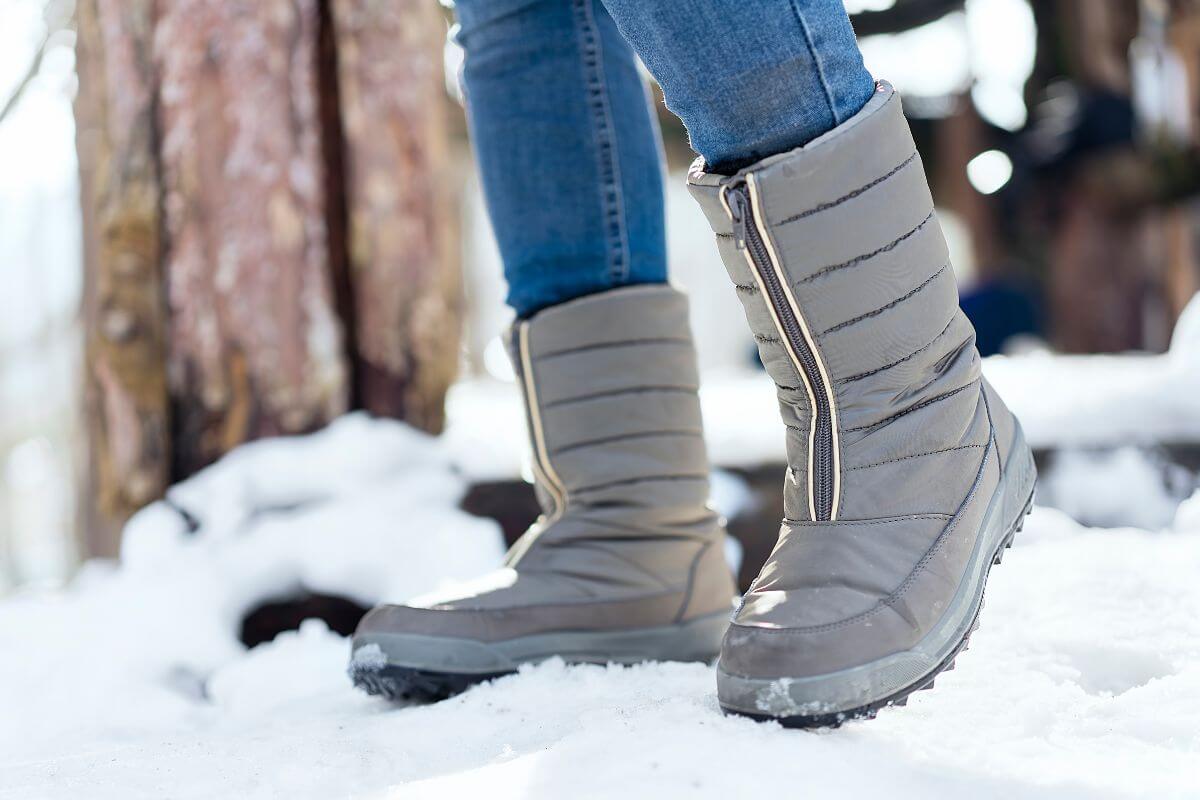
Drying your winter boots after cleaning and also after a long day of adventuring in Montana’s snow-dusted landscapes is as crucial as having a sturdy pair on your feet in the first place.
Here are some fail-proof methods to keep your boots fresh and functional for many winter seasons to come:
- Wipe & Air-Dry – Make sure to dry your winter boots by wiping them thoroughly, and then leave them to air-dry. You can dry them by placing your boots in front of an electric fan. This can help to circulate the air inside the boots.
- The Newspaper Trick – For a bit of old-school wisdom, try stuffing your boots with loosely crumpled newspaper. It helps to absorb the moisture and also makes it dry quicker. But make sure to keep the inside of the boot loose enough for some airflow.
- Avoid Direct Heat – While it might be tempting to place your boots near the fireplace or on a heater, that’s a big no-no. Direct heat can warp the shape and dry out the materials, leading to undesirable wear and tear.
- Always Dry Before Storing – Be patient and ensure that your boots are completely dry before stowing them away for the season. Not only does this prevent any musty odors from developing, but it also protects the structural integrity, so they’re ready and raring to go the next time you need them.
Remember, a little extra care during the drying process can extend the longevity of your winter boots, making your investment worthwhile for the many Montana winters ahead.
3. Storage
To keep your winter boots in top condition and winter-ready year after year, you need to up your storage game. Proper storage isn’t just about saving space, it’s essential for weather protection, boot longevity, and your style satisfaction.
Here are the best practices for winter boot storage:
- Use small, individual stackable containers so they don’t scuff or get damaged.
- Boot shapers or newspapers are your boot’s best friends to maintain that just-bought shape.
- Store upright or invest in boot hangers.
- Keep them in clean, dry, temperature-controlled spaces such as well-organized closets or dedicated boot racks.
- Protect sensitive fabrics like suede with a shoe bag or box to prevent dust from building up on the surface.
Upgrade from ‘wherever-I-can-stuff-them’ to a proactive winter boot care plan. It will not only extend the lifespan of your boots but also reduce the last-minute hassle of finding them in the labyrinth of a closet.
4. Odor Control
The joy of stomping through crisp, untouched Montana snow can quickly be tainted if you’re dragging last week’s odors along for the ride. Whether you prefer natural or commercial solutions, it’s important to tackle the sneaky microbial growth that’s causing the stench.
Invest in odor-absorbing insoles or sachets specifically designed for boots. These little heroes won’t just neutralize the odor; they’ll often dissipate that smell way better than your classic lavender sachet.
After you’ve had your snowy fun, resist the urge to chuck them in a dark corner. Instead, allow your boots to bask in some fresh air after each use to prevent odor buildup.
Odor control in your winter footwear is crucial if you don’t want a daily nose battle. In a place where the wilderness is vast and the winters are long, it’s important to think of your boots not just as winter tools, but as year-round companions.
5. Inspection
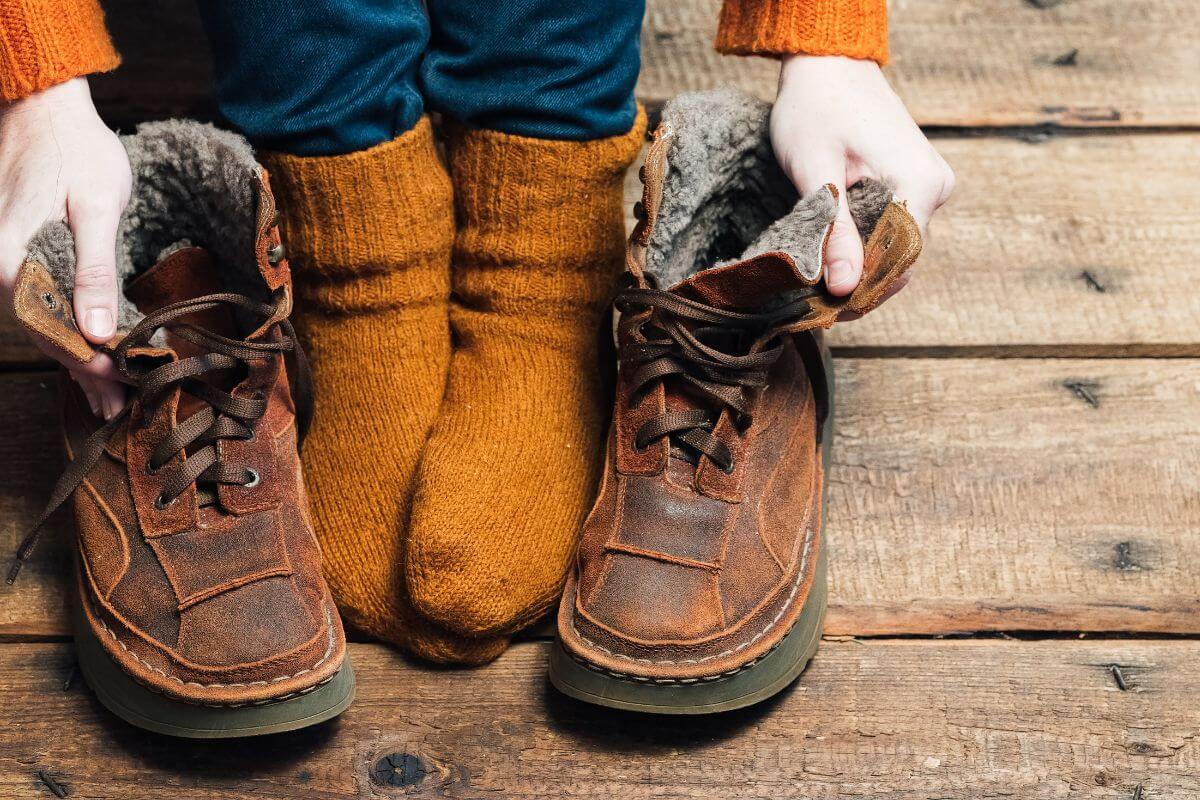
To ensure your winter boots keep up with your snowy exploits, regular inspection is as essential as knowing the best places to have a frosty adventure in Montana.
Here’s why periodic boot checks matter:
- Catch Wear and Tear Early – Don’t let worn-out soles or loose stitching catch you off guard miles away from civilization; a periodic once-over can tip you off before a small problem turns into a big one.
- Buckle-Down on Buckles and Zippers – Just like how you glance in the rearview mirror before a road trip, ensure buckles, zippers, and laces are in tip-top shape for the journey ahead.
- Seal the Seams, Ward Off Water – Montana’s snowy landscapes may be picturesque, but you don’t want those same snowflakes cozying up to your toes. Check for seals that need enhancing to prevent frosty incursions.
- Product-Specific TLC – Whether your boots are leather or rubber, targeted care can prolong their life. Beeswax-based products are like a winter spa for leather, preserving it and reigniting its water-fighting spirit, while rubber conditioners are vital in dry, harsh environments for rubber boots.
So, don’t forget to add regular boot inspection to the top of your Montana prep checklist! If you observe noticeable signs of wear or damage on your boots, have them fixed immediately to avoid any further problems.
Best Montana Winter Boots: Brands Recommendations
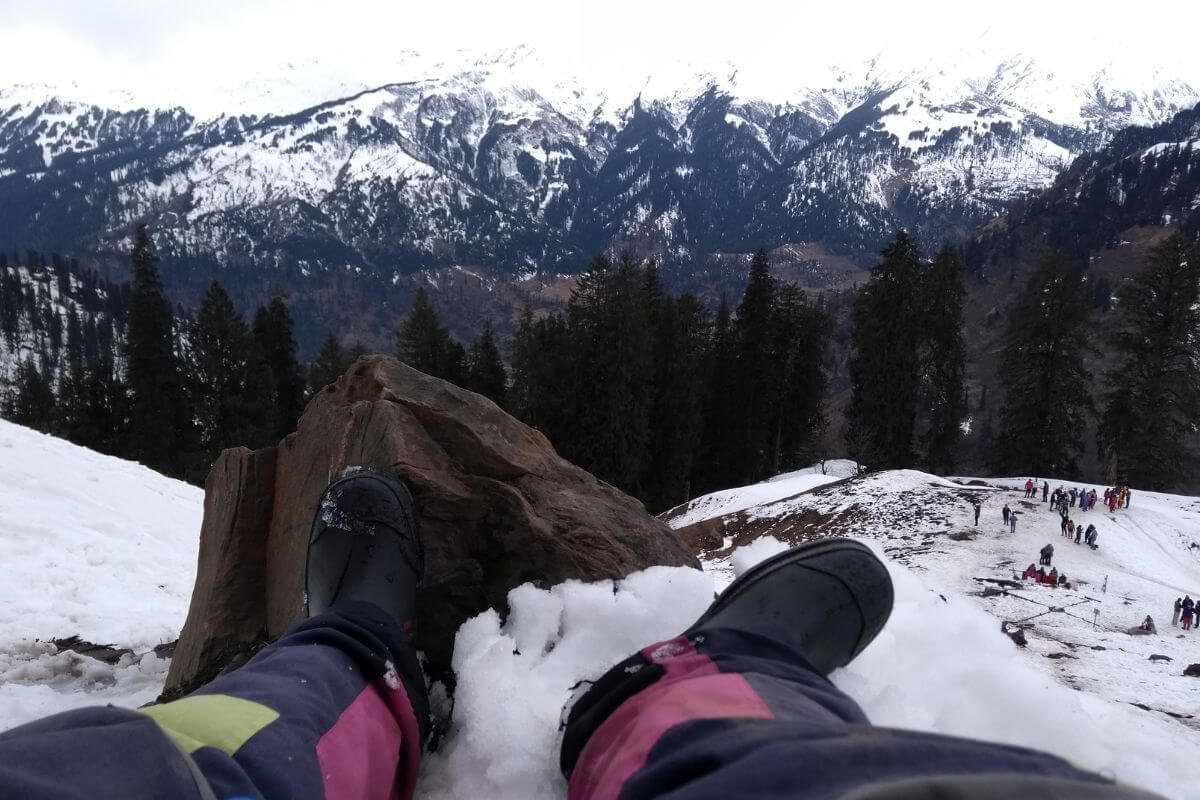
When it comes to hoofing it through the powdery Montana snow, the right pair of winter boots can be your best friend. Quality, warmth, and durability aren’t just buzzwords here – they’re essentials.
Based on my experiences and those of fellow Montana aficionados, here’s a breakdown of brands that consistently deliver top-notch winter boots designed to conquer Big Sky Country’s chilliest terrain. So lace up, because these boots were made for more than walking.
1. Sorel

When the Montana chill sets in, you want a reliable pair of boots that are not only practical but look good too. That’s where Sorel strides in. These boots are, in a word, legendary.
Sorel’s boots are a popular choice for men, women, and kids because they’re made of high-quality materials that include:
- Waterproof Leather and Suede – These are the backbone materials of many Sorel boots – great for the typical winter boot that sees some heavy use.
- Felt Insulation – A go-to choice for Sorel, efficient insulation for extreme cold weather.
- Vulcanized Rubber – For those heavy days when slipping is not an option.
Sorel offers an extensive range of winter and snow boots for women. Style-wise, the Women’s Joan of Arctic Boot deserves a special mention. Waterproof suede, a faux shearling cuff, and a construction that screams ‘winter ready’.
These boots are built to keep your toes warm and dry. Because if there’s one thing fashion shouldn’t compromise on, it’s comfort.
And if you’re on the hunt for the best-ever everyday winter boots, it’s hard to ignore the Sorel Caribou. A trusty friend for your feet, cushioned by throwback felt interiors that are both warm and removable – a delicious feature that makes the drying process quick and easy.
These aren’t just any old cold-weather boots; they’re your favorite boots, with the bonus of being incredibly practical and stylish. Sorels have earned their place in the premium boot landscape, delivering not just on style but also on that crucial functionality Montana’s snowy winters demand.
2. The North Face

The North Face doesn’t just design boots; they craft winter-ready footwear, perfectly melding functionality with modern style. From winter hiking boots to waterproof boots, they’ve got various styles to match your Montana winter aesthetic.
These are no ordinary winter boots; they’re burly boots that are built for the job. Here are a few key features that make The North Face boots a must-have for a Montana winter:
- Thermo Technology – Keep your feet warm, even in sub-zero temperatures.
- Insulation – Ensures your feet remain cozy, no matter how long you’re out.
- Waterproofing – Sealed to perfection, preventing snow and water from seeping in.
- Insole and Midsole – Supportive insole and midsole, preventing those dreaded foot aches you get from trudging through deep snow for hours.
- Trending Styles – Sleek and winter-ready, because who says you can’t be stylish while tackling a snowbank?
A boot with all these features and more, The North Face Chilkat 400 V is the holy grail of winter boots. It’s an all-rounder with features like waterproof, seam-sealed construction, and rustproof metal hardware that can take on the harshest of Montana’s snowstorms.
Whether you’re hiking, snowshoeing, or just braving the cold, The North Face boots are a top-tier choice that will keep you comfortable and safe, no matter how far off the beaten path you dare to venture.
3. Merrell

When the mercury takes a nosedive and Montana becomes a winter wonderland, your run-of-the-mill boots just won’t cut it. That’s where Merrell comes in, a brand that’s tailored for folks who like their adventures served with extra chill.
Merrell crafts comfortable boots that don’t compromise on performance or style. Their men’s collection is a testament to this, offering pairs that are as durable as they are cozy.
For the gentlemen, Merrell offers a wide range of winter boots designed to brave the cold weather. Waterproof linings and insulation make these boots a top pick for harsh winter conditions.
Specifically, the Merrell Thermo Chill Mid hits that sweet spot: the 200-gram fill, waterproof lining, and leather upper combine to create the perfect companion for your winter endeavors, be it a brisk walk or an intense hike. These boots aren’t just reliable; they’re a lightweight solution to your winter footwear needs, weighing in at a mere 2 pounds per pair.
For the ladies, there’s a broad spectrum to pick from with styles ranging from insulated ankle designs to tall, fur-lined boots that seal out the cold. For a blend of warmth and airflow, you have the option to grab a pair of ventilated snow boots. Because no one wants sweaty feet in freezing temperatures.
Trust me, Your feet aren’t going to complain when they’re wrapped in Merrell on a Montana winter’s day. Just ensure you give the right fit a try in-store before you embark on your next cold-weather adventure. Your feet will thank you.
4. Kamik

If you’re on a budget but don’t want to skimp on quality, Kamik has got your back – or should I say feet? What I love about this brand is that they offer the best bang for your buck without compromising on features like waterproofing and insulation.
Kamik’s boots are made in North America, with Canadian and imported materials designed and made to survive the coldest winter months. The combination of North American heritage and affordability makes it a no-brainer for anyone looking to make it through the winter without frostbitten toes and an empty wallet.
My pick from their collection is the Kamik Nation Plus, a traditional heavyweight boot that’ll cruise you through the snowiest winters. The waterproof, burly leather upper and thick rubber soles ensure your feet and toes remain dry. Plus, the removable liner, including 200-gram Thinsulate, and a tall cut, protect you from the most brutal cold, making it ideal for Montana’s most severe winters.
Whether you’re out hiking or just braving the morning commute, Kamik boots won’t let you down. So if you’re looking to keep the cold out without letting the bills pile up, give Kamik a shot – your wallet and your feet will thank you.
5. Oboz Footwear

In Montana, I’ve encountered my fair share of challenging terrains – especially during the colder months where the snow can be both a charm and a challenge. And when it comes to winter boots that won’t quit on you, Oboz gets my vote.
Oboz Footwear, based right in Bozeman, Montana, captures the essence of the state’s wild landscapes in its footwear. Inspired by Montana’s ruggedness, each pair is crafted to be tough and versatile perfect for outdoor adventures that the Treasure State offers.
Among their winter boots, Oboz’s Andesite II Mid Insulated Waterproof is a standout. The high mid-design and nubuck leather uppers give the right mix of support and protection for dry, rocky terrains – making them ideal for easy day hikes.
What sets Oboz apart is their propriety insoles. Every pair, including the Andesite II, features a molded insole specifically designed for that shoe. It’s like slipping your feet into a custom fit, ensuring your comfort and stability in every step.
So, the next time you’re out and about in Montana’s winter wonderlands or even encountering extreme temperatures in your own neck of the woods, consider Oboz footwear. Quality, ruggedness, and style are what you’ll get.
Montana Winter Boots Guide Final Thoughts
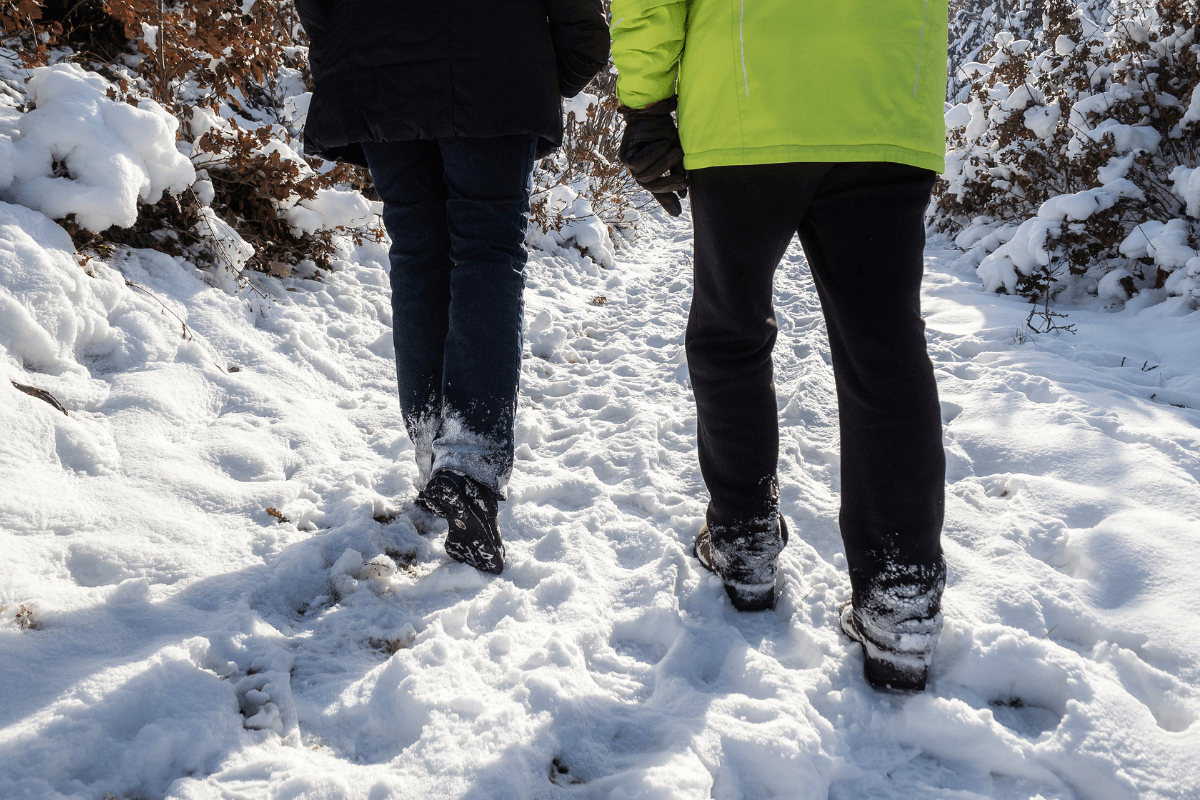
Selecting the right winter boots is not just about staying stylish, but about ensuring safety, comfort, and practicality in unpredictable weather conditions. By considering factors such as purpose, boot height, and sizing, you can choose winter boots that are both practical and comfortable for Montana’s unforgiving snow.
To ensure their longevity and effectiveness in keeping your feet warm and dry during Montana’s snowy winters, proper maintenance is key. As the cold weather approaches, it is important to know how to care for your winter boots.
And with brands such as Merrell and Oboz Footwear, you can choose footwear that excels in Big Sky Country’s snow-covered terrains. Keep in mind your personal preferences, as a well-chosen pair of winter boots can be your trusted companion through Montana’s challenging winters, offering warmth, support, and the freedom to explore with confidence.
So, when the next snowfall arrives, your feet will be ready for anything Montana’s winter wonderland has in store. Keep your feet happy and cozy with the perfect blend of warmth and comfort, ensuring every step you take is a delightful experience in the snow-covered landscapes.
Montana Winter Boots Guide FAQs
1. What Is the Difference Between Snow Boots and Winter Boots?
Snow boots are typically designed with a focus on waterproofing and deep-snow traction for harsh winter conditions, while winter boots encompass a broader category that may prioritize insulation and versatility in various winter settings.
2. Which Boots Are Best for Snow?
Boots specifically labeled as “snow boots” with features such as waterproofing, insulation, and specialized traction are generally the best choice for navigating and staying comfortable in snowy conditions.
3. Should You Size up or Down in Winter Boots?
For winter boots, it’s recommended to size up to allow room for thicker socks and improved insulation, ensuring comfort and warmth in cold weather.
4. Should Winter Boots Be Tight or Loose?
Winter boots should have a snug fit to provide proper insulation and support, but they shouldn’t be excessively tight. A snug fit helps retain warmth and ensures better control while allowing for some room to wear thicker socks providing comfort without compromising circulation.
5. How to Dress for Winter Weather in Montana?
In Montana’s winter weather, dress in layers with moisture-wicking base layers, insulating materials, and a waterproof outer layer. Additionally, wear insulated boots and accessorize with a hat and gloves for comprehensive protection against the cold and potential snow.
Discover more useful facts when traveling to Montana in the articles below:
- https://www.ehs.iastate.edu/weather/winter/walking
- https://www.montana.edu/international/training/participant_resources/WhattoBring.html
- https://www.montana.edu/emergency/emergency_actions/winter-weather.html
- https://www.health.ny.gov/environmental/investigations/face/training/snowmaking/footwear.htm
- https://www.sorel.com/
- https://thenorthface.com
- https://www.merrell.com/
- https://www.kamik.com/
- https://obozfootwear.com/



